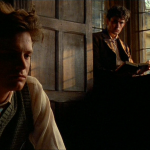Beasts of No Nation 2 (2025) – The War Within

Related movies:
Few films cut as deeply as Beasts of No Nation, and now its sequel, Beasts of No Nation 2 (2025), dares to return to a world where innocence is long lost and survival comes at the cost of one’s soul. With Abraham Attah reprising his role as Agu, this continuation does not seek to comfort—it seeks to confront, dragging audiences further into the unrelenting aftermath of war.
The opening imagery of the trailer is devastating in its simplicity: Agu, now a young man, stands motionless amidst ruins. His silence says more than words could—eyes hollow yet burning with the memory of what cannot be forgotten. Around him lies the aftermath of a brutal battle, smoke curling skyward like a prayer unanswered. This is not the beginning of war—it is the haunting shadow of its persistence.
Agu is no longer the child soldier audiences wept for in the first film. Time has reshaped him into a hardened survivor, but the scars remain—etched not just on his body, but on his spirit. The sequel explores this duality: the boy who once lost everything, and the man now forced to live with what he became. His struggle is not just external but internal, as he confronts the question of whether redemption is possible in a world that has stolen so much.
The narrative thrust takes Agu beyond the battlefield into the fractured remnants of a society still reeling from conflict. His journey forces him to navigate fragile communities, the lingering corruption of warlords, and the quiet hostility of those who see him only as a reminder of violence. Every encounter is a test: can he escape the cycle, or is he forever bound to it?
Abraham Attah’s performance is the film’s heartbeat. His portrayal of Agu’s haunted maturity carries a raw, devastating weight. Where once he captured innocence lost, now he embodies trauma endured—a young man who carries entire wars behind his eyes. His performance alone promises to anchor the sequel in authenticity and heartbreak.
Visually, the film maintains the stark, uncompromising style of its predecessor. Natural light bathes scenes in harsh truth—lush landscapes cloaked in silence, burned-out villages, and the intimate close-ups that refuse to look away from human pain. The cinematography makes the world feel both beautiful and unbearable, a paradox that defines Agu’s existence.
Themes of memory and identity dominate. Beasts of No Nation 2 explores not only the violence inflicted by war, but the battle fought long after the bullets stop. For Agu, survival is no longer the question—living with survival is. The sequel dares to ask: what becomes of children forced to grow up in blood? What kind of adults do they become?
Supporting characters—new allies, broken communities, perhaps even remnants of the forces that once conscripted him—add layers of conflict. Each interaction reflects the greater theme: the human cost of war doesn’t vanish; it lingers like a wound that refuses to close.
The pacing, as suggested by the trailer, is deliberate. Long silences, stark imagery, and brief flashes of violence create a rhythm that mirrors trauma itself—quiet, then sudden, unrelenting eruptions. It’s less about action than confrontation, less about spectacle than survival of the soul.
By the end, Beasts of No Nation 2 positions itself not as a story of victory, but of endurance. Agu’s journey is not to reclaim innocence—it is to find a way forward when the past is a chain too heavy to carry. It is a story about scars, about memory, and about the slivers of hope that flicker even in the darkest ruins.









